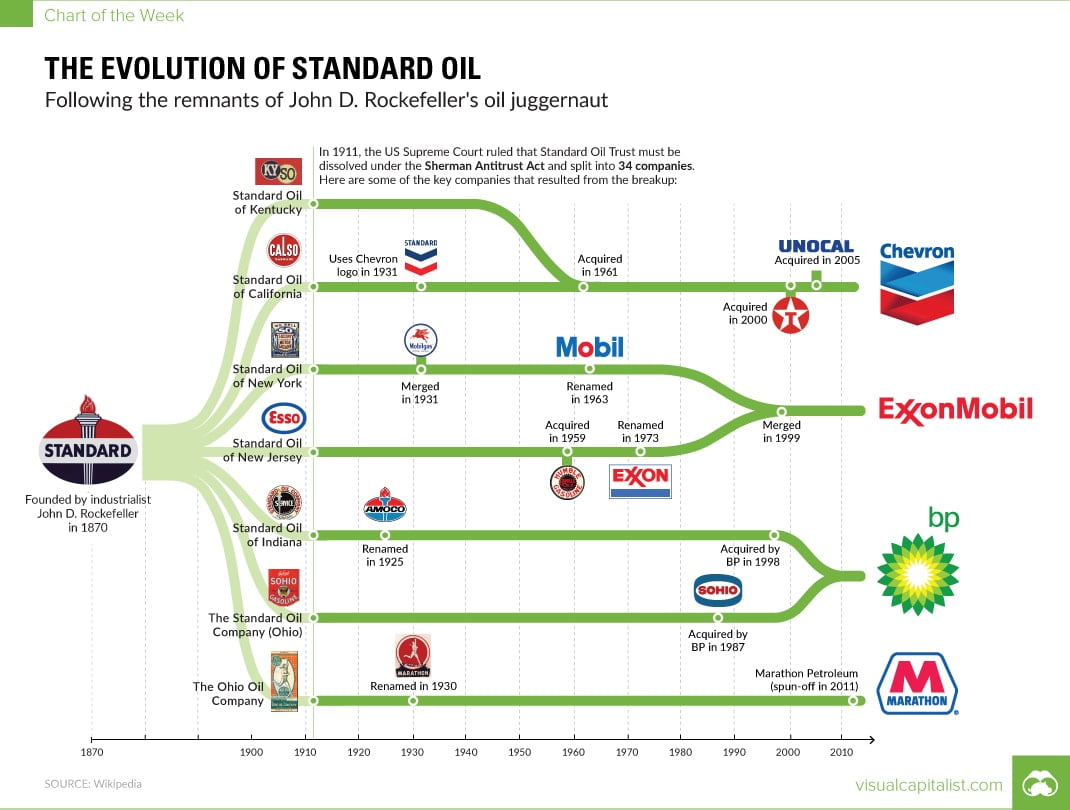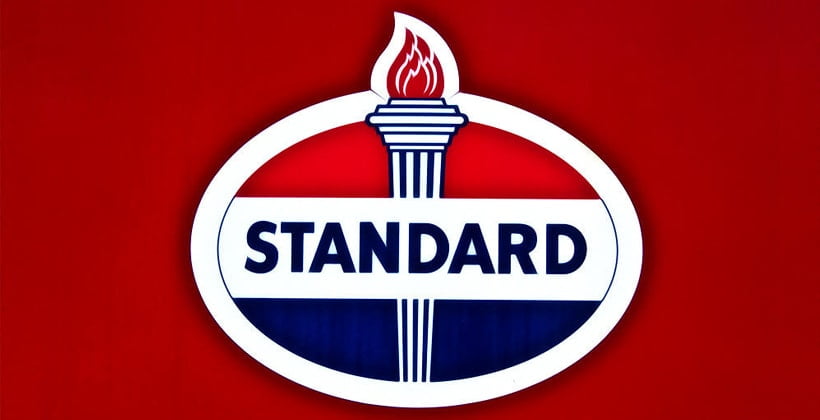First break up
The company faced legal issues in 1890 following passage of the Sherman Antitrust Act. That also brought unwanted attention to the company by Ida M. Tarbell, who began an investigation.
Following publication of her report, the Standard Oil Company was forced to break up into separate state companies — the “Seven Sisters” — each with its own board of directors.
Market share before second break up
Before the further break-ing up of the seven companies that were part of Standard Oil, the company refined nearly 75% of all US crude and marketed over 80% of domestic kerosene.
In July 1911, Standard Oil announced its new structure – split into 33 companies, some large and some small. In doing so, it made sure that the new companies shared the market rather than competed with one another.
Oil Prices
Despite the dominance of Standard Oil over the American market from the 1880s through the 1900s, one important fact should not be ignored: Oil prices throughout this period remained at about $1 per barrel, lower than the prices before or after this period. It seems that it was the expansion of markets (cheap oil) rather than high oil prices that financially fueled the growth of Standard Oil.
Dividend Aristocrates
Exxon Mobil and Chevron hold a special distinction that shows their durability. They are the only two Dividend Aristocrats in the Energy sector. To be a Dividend Aristocrat, a stock must have 25+ years of consecutive dividend increases. Dividend Aristocrats are often the strongest and most dominant stocks in their industry, as is the case with Exxon Mobil.

Graphic source: visualcapitalist.com

